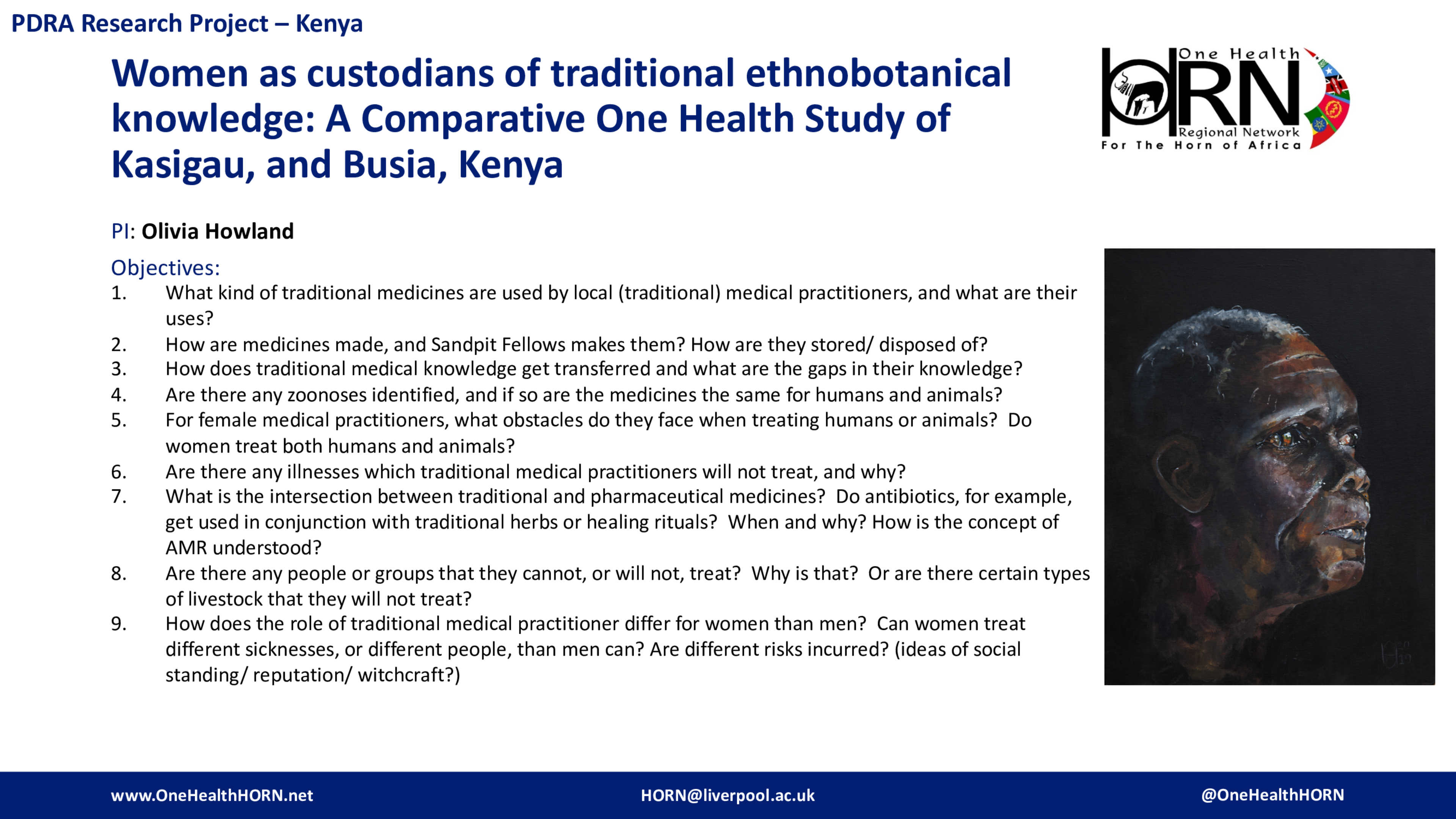
Description
Objectives:
1. What kind of traditional medicines are used by local (traditional) medical practitioners, and what are their uses?
2. How are medicines made, and Sandpit Fellows makes them? How are they stored/ disposed of?
3. How does traditional medical knowledge get transferred and what are the gaps in their knowledge?
4. Are there any zoonoses identified, and if so are the medicines the same for humans and animals?
5. For female medical practitioners, what obstacles do they face when treating humans or animals? Do women treat both humans and animals?
6. Are there any illnesses which traditional medical practitioners will not treat, and why?
7. What is the intersection between traditional and pharmaceutical medicines? Do antibiotics, for example, get used in conjunction with traditional herbs or healing rituals? When and why? How is the concept of AMR understood?
8. Are there any people or groups that they cannot, or will not, treat? Why is that? Or are there certain types of livestock that they will not treat?
9. How does the role of traditional medical practitioner differ for women than men? Can women treat different sicknesses, or different people, than men can? Are different risks incurred? (ideas of social standing/ reputation/ witchcraft?)
Comments
Add new comment